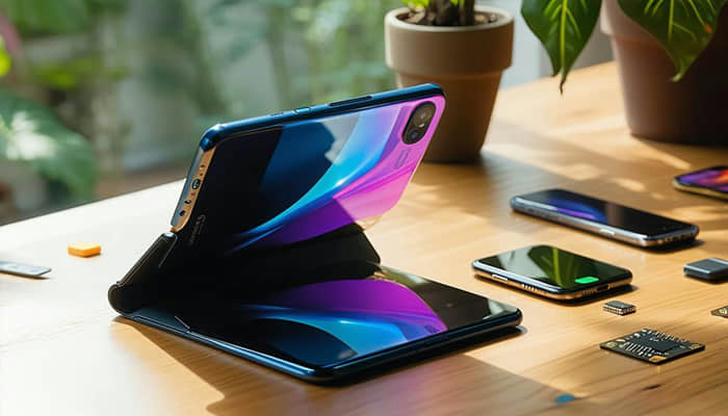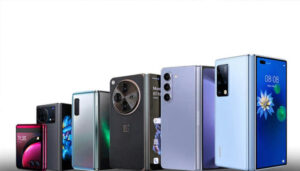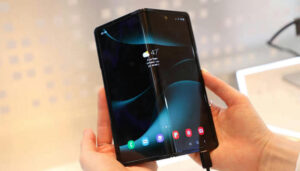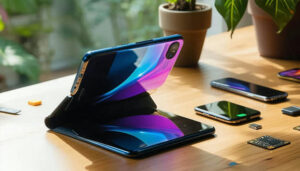
Why Foldable Phones Are Making a Comeback: The Pros & Cons
Remember the good old days of flip phones? The satisfying snap when you closed them, the cool factor of answering a call with a flick of your wrist—those were the days. Then came smartphones, and suddenly, flat, rectangular screens took over. For years, it seemed like we had hit peak phone design.
But now, foldable phones are making a serious comeback. Samsung, Google, and even Apple (if rumors are true) are betting big on this technology. These futuristic-looking devices promise the best of both worlds: a compact phone that unfolds into a tablet-sized screen. Sounds amazing, right?
But hold on—before you rush to trade in your current phone, let’s talk about whether foldables are really worth the hype. Are they the next big thing in mobile tech, or just another flashy trend? In this article, we’ll break down the pros and cons of foldable phones so you can decide if they’re the right fit for you. Let’s dive in!
1. A Brief History of Foldable Phones

Foldable phones might seem like a futuristic innovation, but the idea has been around for decades. If you grew up in the early 2000s, you probably remember flip phones like the Motorola Razr or the Nokia 6600 Fold. They were compact, stylish, and had that satisfying snap when you closed them—pure nostalgia!
Then, smartphones took over. Touchscreens got bigger, physical buttons disappeared, and the idea of a folding phone faded into history. For a while, the industry was all about making phones thinner and screens sharper. But as people started craving more screen space without carrying bulky devices, tech companies began experimenting with foldable displays.
The first modern foldable smartphone, the Samsung Galaxy Fold, launched in 2019. It was a game-changer—but not without problems. Early models suffered from fragile screens, weak hinges, and sky-high prices. Other brands, like Huawei and Motorola, also jumped in, refining the technology over time.
Fast forward to today, and foldable phones are finally gaining traction. But what changed? Let’s take a look.
2. Why Foldable Phones Are Making a Comeback

Foldable phones aren’t just a gimmick anymore. Thanks to major improvements in technology, they’re becoming more durable, practical, and mainstream. Here’s why they’re making a strong comeback:
Stronger, More Durable Screens
One of the biggest issues with early foldables was their fragile displays. Now, companies have developed ultra-thin glass that bends without breaking, making these screens much tougher.
Better Hinges & Build Quality
The hinge is the backbone of a foldable phone. Modern devices now feature reinforced hinges that can withstand hundreds of thousands of folds without wearing out. That means no more worrying about your phone breaking after a few months of use.
More Powerful Processors & Battery Life
Early foldables struggled with battery life and performance, but newer models come equipped with faster processors and optimized batteries to handle the extra screen size without draining power too quickly.
Growing Consumer Interest
People are getting tired of the same old phone designs. Foldable phones offer something fresh, exciting, and futuristic — and tech enthusiasts love that. More brands are now jumping on board, which means prices will eventually drop as competition increases.
More App Optimization for Foldable Screens
In the past, many apps didn’t work well on foldable screens. Now, companies like Google and Samsung are working with app developers to ensure that popular apps seamlessly adapt to different screen sizes, making the experience much smoother.
With all these improvements, foldable phones are no longer just for tech geeks or early adopters. But are they really worth the investment? Let’s weigh the pros and cons.
3. The Pros of Foldable Phones
If you’re considering making the switch, here are some of the biggest reasons why people love foldable phones:
Larger Screen, Compact Design
One of the best things about foldable phones is that they give you the best of both worlds. When folded, they’re small and easy to carry, but when you unfold them, you get a tablet-sized display — perfect for watching videos, reading, or gaming.
Multitasking Like a Pro
If you love doing multiple things at once, a foldable phone is a dream come true. Many models let you run multiple apps side by side, making it easier to work, chat, and browse at the same time. Imagine watching a YouTube video while taking notes, or replying to emails while keeping an eye on your calendar.
Let’s be honest—foldable phones just look cool. Whether it’s the sleek flip design or the book-like fold, these phones stand out from the crowd. If you like having the latest and greatest tech, a foldable phone is a definite conversation starter.
Better Gaming & Entertainment Experience
With a bigger screen, gaming and video streaming become much more immersive. Some foldable phones even come with higher refresh rates and better sound systems, making them great for entertainment on the go.
More Productivity & Creativity
For professionals and creatives, foldable phones offer a larger workspace. Some models even support styluses, turning them into mini sketchpads or notepads. If you do a lot of designing, note-taking, or digital art, a foldable phone can be a fantastic tool.
4. The Cons of Foldable Phones
Foldable phones sound amazing, but they aren’t perfect. Before you jump on the foldable bandwagon, here are some downsides to consider:
High Price Tag
Let’s start with the obvious — foldable phones are expensive. Most flagship models start at $1,000-$2,000, making them much pricier than traditional smartphones. If you’re looking for a budget-friendly device, a foldable might not be the best choice just yet.
Durability Concerns
Even with improved materials, foldable phones are still more fragile than regular smartphones. The hinge mechanism can wear out over time, and the foldable screen is more prone to scratches than traditional glass screens. If you drop your phone often, you might want to think twice.
Battery Life Isn’t the Best
Larger screens require more power, and foldable phones usually have two displays. While manufacturers have improved battery technology, most foldable phones still don’t last as long as regular smartphones on a single charge. If you’re a heavy user, you might need to carry a charger or power bank.
App Compatibility Issues
Not all apps are optimized for foldable screens. While big names like YouTube, Google, and Instagram have adapted, some apps still don’t work smoothly in split-screen or extended display mode. This can lead to awkward layouts, black bars, or apps that don’t function properly when unfolded.
Heavier & Bulkier Than Normal Phones
Foldable phones may be compact when closed, but they’re still thicker and heavier than traditional smartphones. If you like ultra-slim, lightweight devices, carrying a foldable might feel a bit clunky in your pocket or bag.
5. The Future of Foldable Phones: Trend or Tech Revolution?

So, are foldable phones the future, or just a passing trend? Let’s take a look at where this technology is heading.
More Affordable Options
Right now, foldables are premium devices, but as more companies enter the market, prices are expected to drop. Just like how flat-screen TVs and smartphones became cheaper over time, foldable phones could become more accessible to everyday users.
Stronger, More Reliable Designs
Manufacturers are working hard to make foldable phones even more durable. We can expect stronger hinges, scratch-resistant screens, and waterproof models in the near future, making them more practical for everyday use.
Better Battery Life & Charging Speeds
Battery life is a big concern, but improvements in fast-charging and battery technology will make foldable phones last longer. Some brands are even working on graphene batteries, which could dramatically extend battery life and reduce charging times.
New Form Factors & Innovation
Right now, we have two main types of foldable phones: flip-style (clamshell) and book-style (tablet fold). But companies are experimenting with rollable and stretchable screens, which could lead to even more futuristic designs. Imagine a phone that rolls out like a scroll or stretches like elastic—that’s where we might be headed!
A True Laptop Replacement?
With bigger screens, better multitasking, and stylus support, foldable phones could eventually replace laptops and tablets for many people. Imagine having one device that works as a phone, tablet, and mini laptop—all in your pocket.
Conclusion: Should You Get a Foldable Phone?
At the end of the day, foldable phones are exciting, but they’re still evolving. If you’re an early adopter, they can be a fun and futuristic upgrade. But if you prefer reliability and affordability, you might want to wait a little longer.
What do you think? Would you buy a foldable phone, or are you sticking with a regular smartphone? Let us know in the comments!
